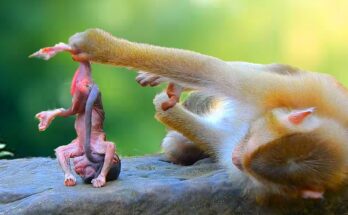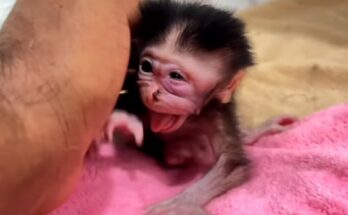Deep in the heart of the Tanzanian wilderness, the Hadzabe tribe continues to follow ancient hunting and cooking traditions. One of the most surprising and unique parts of their diet is roasted monkey meat. While it may seem shocking to outsiders, for the Hadzabe, it is a natural part of their survival and culture.
The process begins early in the morning. The Hadzabe hunters, armed with handmade bows and poisoned arrows, venture deep into the forest searching for food. Monkeys, particularly baboons and vervet monkeys, are common targets due to their abundance and the protein they provide. The hunt requires silence, speed, and precision. Once a monkey is caught, the tribe brings it back to camp, where the preparation begins immediately.
Starting the roasting process is a communal effort. The monkey is first skinned and cleaned. The Hadzabe do not waste any parts; every organ and piece of meat is valuable. A fire is built using dry sticks and brush, and once the flames are strong, the monkey is placed directly over the fire or hung on sticks to be slow-roasted.
As the meat cooks, the aroma fills the air, drawing in children and elders alike. It is not just a meal—it is a moment of togetherness, of sharing stories, and passing down knowledge. The meat, once crispy on the outside and tender inside, is pulled apart by hand. Each bite is savored with appreciation, knowing the effort and danger involved in the hunt.
To the Hadzabe, eating roasted monkey is not unusual—it is practical and respectful of the natural resources around them. While modern eyes may see this as controversial, the Hadzabe are simply continuing a lifestyle that has sustained them for thousands of years. For them, starting a roasted monkey meal is about more than just eating—it is about survival, tradition, and connection to the land.


